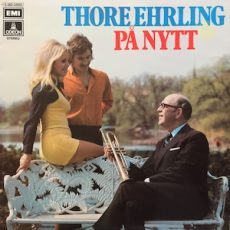
Daily Dose Of Jazz…
Thore Ehrling was born December 29, 1912 in Stockholm, Sweden and played with the Frank Vernon Ensemble from 1930 to 1934. At the same time he studied at the Royal Swedish Academy of Music.
From 1935 to 1938 he played under Håkan von Eichwald and did arrangement and composition work on the side. He started his own ensemble in 1938, which grew into a big band in the nineteen years it was active. This group played popular music and jazz, recorded frequently, and played often on Swedish radio.
The group featured many sidemen who went on to become prominent on the Swedish jazz scene, such as Uffe Baadh and Carl-Henrik Norin, and accompanied popular Swedish singers such as Inger Berggren and Lily Berglund.
Trumpeter, composer and bandleader Thore Ehrling, who led jazz and popular music ensembles, died in Stockholm, Sweden on October 21, 1994.
More Posts: bandleader,composer,history,instrumental,jazz,music,trumpet
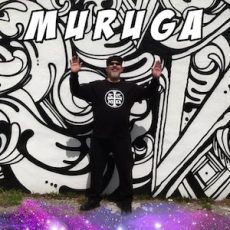
Daily Dose Of Jazz…
Muruga Booker was born Steven Bookvich on December 27, 1942 in Highland Park, Michigan at Highland Park General Hospital. His father played accordion ndfirst played the accordion before taking up drums as a preteen. He studied under Misha Bichkoff, a Russian music teacher and played drums professionally in 1961 with “The Low Rocks” in Detroit, Michigan as Steve Booker, achieving local recognition playing in 1962.
1964 saw him playing with folk-rock singers, psychedelic folk rock band and was a member of The Casuals to back up Brenda Lee. In 1968 he joined Paul Winter and The Winter Consort, and performed on their album Something in the Wind. In 1969,he played Woodstock, met Swami Satchidananda who gave him the name Muruga. He went on to play with Ted Nugent, record with Allen Ginsberg and Bob Dylan before joining Darius Brubeck, and forming the electronic experimental trio MBR. Then he toured as part of the Darius Brubeck Ensemble, and played with Dave Brubeck, Gerry Mulligan, Paul Desmond and Alan Dawson.
He recorded with Weather Report in the Seventies, moved to New York City and worked on several projects. Back in Detroit he left jazz and became a member of George Clinton’s P-Funk All-Stars. He move to Oakland, California in mid-1985 and formed Murunga UFM, with his next move being to Ann Arbor, Michigan where he established a recording studio called Sage Ct. Studio..
In 2003 Booker returned to playing and recording jazz as the Global Jazz Trio and as a five-piece group called The Global Jazz Project before creating a duo.
Drummer Muruga Booker, who won Outstanding World Music Instrumentalist and six Detroit Music Awards, continues to perform and record in a variety of music genres.
More Posts: bandleader,crums,history,instrumental,jazz,music
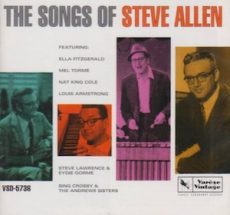
Daily Dose Of Jazz…
Stephen Valentine Patrick William Allen was born in New York City, on December 26, 1921. As an only child and with his father dying when he was raised on the South Side of Chicago, Illinois largely by his mother’s Irish Catholic family. Running away from home at 16 he easily took to begging. A short stint in the Army was derailed by asthma and he was discharged.
He was a pianist and a prolific composer. By his own estimate, he wrote more than 8,500 songs, some of which were recorded by numerous leading singers. Allen won the 1964 Grammy Award for Best Original Jazz Composition for “Gravy Waltz, for which he wrote the lyrics. His songs have been performed and/or recorded by Count Basie, Tony Bennett, Bobby Darin, Ella Fitzgerald, Mark Murphy, Judy Garland, Aretha Franklin, Lionel Hampton, Claire Martin, Oscar Peterson, the McGuire Sisters and Ray Brown among otheres.
He also wrote more than 50 books, including novels, children’s books, and books of opinions, including his final book, Vulgarians at the Gate: Trash TV and Raunch Radio published in 2001.
Pianist, composer, writer, actor, comedian, television and radio personality Steve Allen, who in 1954 co-created and was the first host of The Tonight Show, died due to a ruptured blood vessel on October 30, 2000 in Los Angeles, California. He was 78.
More Posts: composer,history,instrumental,jazz,music,piano,writer
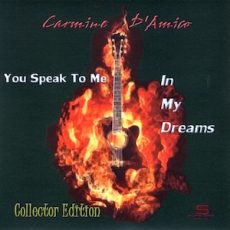
Daily Dose Of Jazz…
Carmine D’Amico was born on December 22, 1954 in Brooklyn, New York. His father gave him the choice of piano or the guitar and he chose the latter. Taught by his father who instilled in him that each note must have meaning. At age 9 he recorded Who Wears Short Shorts, which became a big hit. He was then signed to Capitol Records and went on tour , including television appearances on American Bandstand, The Allen Fried Show, and Soul Train. From age 9 – 11 during the 1950s he played on hit records by the Shirelles, Connie Francis, Fabian, Frankie Avalon, and others.
He won academic scholarships to both high school and college, graduating valedictorian from Trinity High School with a 99.9 average. Carmine found himself in pre-med but then transferred to Queens College and majored in music. Studying in between touring with Tammy Grimes, Liza Minelli and Ed Ames, he graduated with a B.A. in Music Education.
Then came military service with an assignment with an Army Dance Band. Discharged, he returned to New York and resumed his career activities, first joining Ed Ames, recording two of his biggest hits, Try To Remember and My Cup Runneth Over.” D’Amico then became staff guitarist on the Mike Douglas Show and remained for three years.
He went on to work with Bobby Darrin, Sergio Franchi, Patti Austin, Englebert Humperdinck, Vic Damone, Manhattan Transfer, Shirley Maclaine, Henry Mancini, Michele Legrande, Bernadette Peters, The Pointer Sisters, The O’Jays, Jack Jones, Lainie Kazan, Elisa Kashi, Connie Francis, Cleo Laine, Shirley Bassey and Josephine Baker.
He worked with Bernard Purdie, Steve Gadd, Ron Carter, John Faddis, Lou Marini, Lionel Hampton, Teo Macero, Bob Cranshaw, Tom Barney, John Frosk, Doc Severinsen, John Tropea, Mel Torme, Mel Lewis, and Thad Jones, among others.
Outside of jazz he recorded with Bee Gees, the Stylistics, Ray, Goodman and Brown, Stephanie Mills, Vanessa Williams, Patti LaBelle, Freda Payne, Tina Turner, Ben Vereen and played on all of the Sugar Hill Productions. During this prolific period and seemingly height of opportunities for working musicians, NARAS voted him Most Valuable Guitar Player in 1986 and 1987.
Guitarist, producer, composer, arranger and sideman Carmine D’Amico, who over the course of his career received 16 Grammys, died at the age of 67 in Casa Grande, Arizona on Oct. 2, 2011.More Posts: bandleader,composer,guitar,history,instrumental,jazz,music
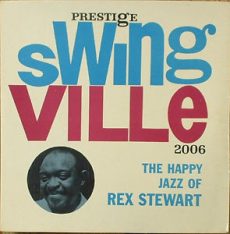
Daily Dose Of Jazz…
Jerome Darr was born on December 21, 1910 in Baltimore, Maryland. His first major professional affiliation was a jug band, the Washboard Serenaders. As a member of this group from 1933 through 1936, the guitarist enjoyed a well-received European tour.
During the 1940s he focused on work as a studio musician showing up on sessions from blues to bebop. His incredibly versatile and prolific career had him playing behind Frankie Lymon & The Teenagers.
Between 1935 and 1973 Jerome participated in roughly twenty jazz recording sessions. in total for this artist. Such a thin statistic indicates that the hefty, complete list of recordings Darr appears on include many other styles besides jazz.
He recorded and/or performed with the Marlowe Morris Trio, Paul Quinichette All-Stars and his Quartet, Rex Stewartand the Charlie Parker Quintet. In his final years, Darr was mostly swinging in the busy band of trumpeter Jonah Jones, in a sense coming full circle with the type of playing he had started out with.
Guitarist Jerome Darr died October 29, 1986 in Brooklyn, New York.
More Posts: guitar,history,instrumental,jazz,music


